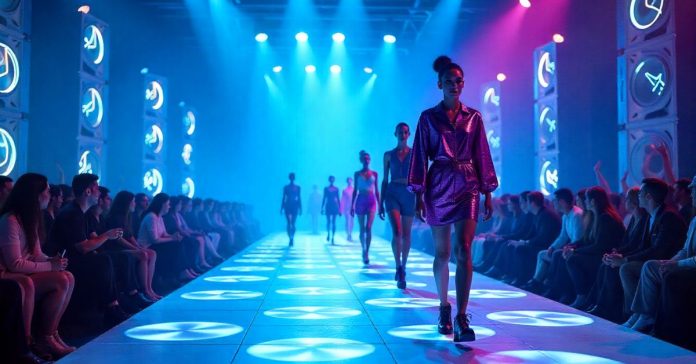The relationship between music and fashion has never been more explosive than it is today. Fashion inspired by music artists continues to dominate runways, street style, and social media feeds across the globe, creating cultural moments that transcend both industries. It seems like Travis Scott Nike collaborations breaking the web and Billie Eilish over-oversized aesthetic redefining youth fashion, we are experiencing an unprecedented moment when no longer musicians are people who simply create hits but make fashion history.
The Evolution of Musical Fashion Influence
Fashion inspired by music artists isn’t exactly new, but the magnitude and pace of which it can occur nowadays would make David Bohy even dizzy. In the olden days it would take months before the style of a musician would move into popular fashion. Now? The cover of Harry Styles in a dress on Vogue and within the same hours a discourse about gender-fluid fashion gets trending all around the world, with fast fashion companies scrambling to launch similar statements.
The era of internet has made each and every music video, red carpet look and Instagram picture a possible fashion statement. Bad Bunny appearing in a skirt did not only break gender-based stereotypes; it also established a style that connected through Latin American youth culture and other parts of the world. It isn t simply about attire anymore it is about who you are and who you are rebelling against and what your cultural identity is all bundled up in both material and style.
Why Musicians Make Perfect Fashion Icons
Musicians have access to something that other traditional fashion models do not have very often: authenticity and connection. Lizzo does not stop at wearing designer clothes when she comes out in a bespoke Versace dress-she is promoting body positivity and self-love. Her style is at the same time relational since it does not seem artificial, constructed by a stylist who is attempting to sell a certain kind of image.
Artists are inherent fashion experimenters due to the Music industries constant requirement to present a visual story. Every period of album creation requires a different style, which makes musicians reinvent their images continuously. Consider the differences between how different Taylor Swift appeared during her 1989 era and the one of Folklore: both styles fit her musical progress so well, shaping the image of millions of fans all over the world.
Current Powerhouses Shaping Fashion Trends
Let’s talk about the real game-changers making waves in 2025. Fashion inspired by music artists today is being led by a diverse group of performers who understand that their influence extends far beyond streaming platforms.
The Sour era is the time when Olivia Rodrigo revived punk-pop aesthetics of the early 2000s with a contemporary twist. Her butterfly hair clips, layered tank tops, and plaid skirts never simply served her angsty pop-rock music, but they ushered in a Y2K revival that has seen Gen Z storming thrift shops and the wardrobes of their elder siblings in search of the retro apparel.
In the meantime, Lil Nas X sets no limits on his unprecedented style. Just his Met Galla looks have created as much fashion conversation as whole Fashion Week collections. He’s proving that fashion inspired by music artists doesn’t have to play by traditional rules—it can be theatrical, provocative, and unapologetically extra.
The Business Behind the Style
The monetary implication of the influence of musical fashions is mind-blowing. Rihanna did not establish another celebrity brand, however, she also transformed the sphere of inclusive fashion and beauty, when launching Fenty. Her success proved that fashion inspired by music artists could translate into billion-dollar businesses when done authentically.
The Yeezy empire of Kanye West, even despite all its scandalous incidents, became the main driver of changing sneaker culture and upgrading streetwear to high-luxury values. Brands were seeing how limited drops, waiting lists, and astronomical resale prices demonstrated to brands that scarcity and artistic partnership could generate an unprecedented demand. It seems as though all the major musicians have a fashion collab on the rise now.
Street Style Revolution
Fashion inspired by music artists has democratized high fashion in ways we’ve never seen before. There is no longer any need to go into a trust fund to emulate your favorite artist style. When Tyler The Creator wears a retro cardigan, the thrift stores the world over saturate with the same. Athletic wear companies take notes when Dua Lipa shares in her workout fits.
This has been increased through social media. Fans break down each outfit, make mood boards and post cheaper options. The conversation around fashion inspired by music artists now happens in real-time, with TikTok users creating “get the look” videos minutes after red carpet events.
Genre-Specific Style Evolution
New musical genre still gives birth to new fashion movements. The hip-hop culture continues to be an enormous power and some of the artists such as Megan Thee Stallion are reinforcing glamorous, body-conservation clothing into the spotlight. With a body that features curves and confidence, her appearance has impact on prom dresses and even basic day to day street wear.
The country music industry is in a kind of style renaissance, as musicians such as Kacey Musgraves are venturing into twisting country elements and high fashion. Again a signature hoodie and cowboy boots mixed with silk dresses à la Nashville to runways of New York Fashion Week.
Futuristic aesthetics are being used by electronic and pop artists as never before. The fashion styles of Grimes and Doja Cat are turning into cyberpunk and experimental looks and are influencing a new generation of fashion risk takers.
The Dark Side of Fast Fashion Influence
While fashion inspired by music artists creates incredible cultural moments, it’s also feeding into problematic fast fashion cycles. As a designer shows a new figure, counterfeits are seen on the Internet within a few days. This fast reproduction normally exploits workers and has a comprehensive effect on degradation of the environment and watering down of the original artistic expression.
The strain on artists to be able to display something new has increased tremendously. Other artists even switch their costumes several times in the very act of performance thus providing much content, but also socializing the idea of overspending. It is a complex connection between art and exploitation of the artist that is yet to be mastered in the industry.
Looking Forward: The Future of Musical Fashion
Fashion inspired by music artists in 2025 and beyond will likely become even more sustainable and inclusive. Artists such as Billie Eilish already work with sustainable companies and utilize their position to encourage people to increase their consumption awareness. The new generation of musical fashion trendsetters would appear to be more conscious of their environmental and social footprint.
Technology will continue reshaping how fashion inspired by music artists reaches audiences. New possibilities of fashion experiment are especially offered by virtual concerts and augmented reality. When artists play in the realm of digital they get limitless possibilities of creating things. Perhaps literally.
The lines dividing musician/fashion designer/cultural commentator ever more blur. Contemporary artists know that they can do much more than just music, and they apply fashion as an additional source to communicate stories, create social statements and produce changes in culture. The future of fashion will also maintain its beat to the music of what is playing the top of the charts, whether we are prepared or not.

